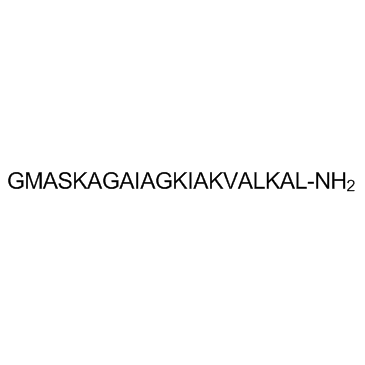Rapid-prototyped and salt-leached PLGA scaffolds condition cell morpho-functional behavior.
M Mattioli-Belmonte, G Vozzi, K Kyriakidou, E Pulieri, G Lucarini, B Vinci, A Pugnaloni, G Biagini, A Ahluwalia
Index: J. Biomed. Mater. Res. A 85(2) , 466-76, (2008)
Full Text: HTML
Abstract
Three dimensional scaffolds microfabricated using pressure-assisted microsyringe (PAM) with controlled geometry and porous membranes obtained using salt leaching were both tested with three different cell types to identify an optimal microstructural architecture for tissue engineering. MG63 (osteoblast-like cells) were used as models of mesenchymal bone tissue and human endothelial cells and NCTC2544 (keratinocytes) represented two epithelial tissues. Both porosity and stiffness of PLGA structures were measured, and cell morphology and cytoskeletal organization analyzed using SEM and actin labeling. The results show that overall the PAM scaffolds, which have a repeated and regular microstructure, are more biocompatible than the random pore salt-leached membranes, and that surface morphology as well as substrate stiffness modulates cell behavior.Copyright 2007 Wiley Periodicals, Inc.
Related Compounds
| Structure | Name/CAS No. | Molecular Formula | Articles |
|---|---|---|---|
 |
PGLa
CAS:102068-15-5 |
C88H162N26O22S |
|
Synergistic transmembrane insertion of the heterodimeric PGL...
2009-08-01 [Biochim. Biophys. Acta 1788 , 1667-1679, (2009)] |
|
Synergistic insertion of antimicrobial magainin-family pepti...
2013-03-19 [Biophys. J. 104(6) , L9-11, (2013)] |
|
A single centre study of coil embolization of intracranial a...
2012-02-01 [J. Clin. Neurosci. 19(2) , 271-6, (2012)] |
|
Gd-DTPA-loaded PLGA microbubbles as both ultrasound contrast...
2010-05-01 [J. Biomed. Mater. Res. B. Appl. Biomater. 93(2) , 551-6, (2010)] |
|
Embolization of intracranial aneurysms with second-generatio...
2011-12-01 [J. Neurointerv. Surg. 3(4) , 324-30, (2011)] |